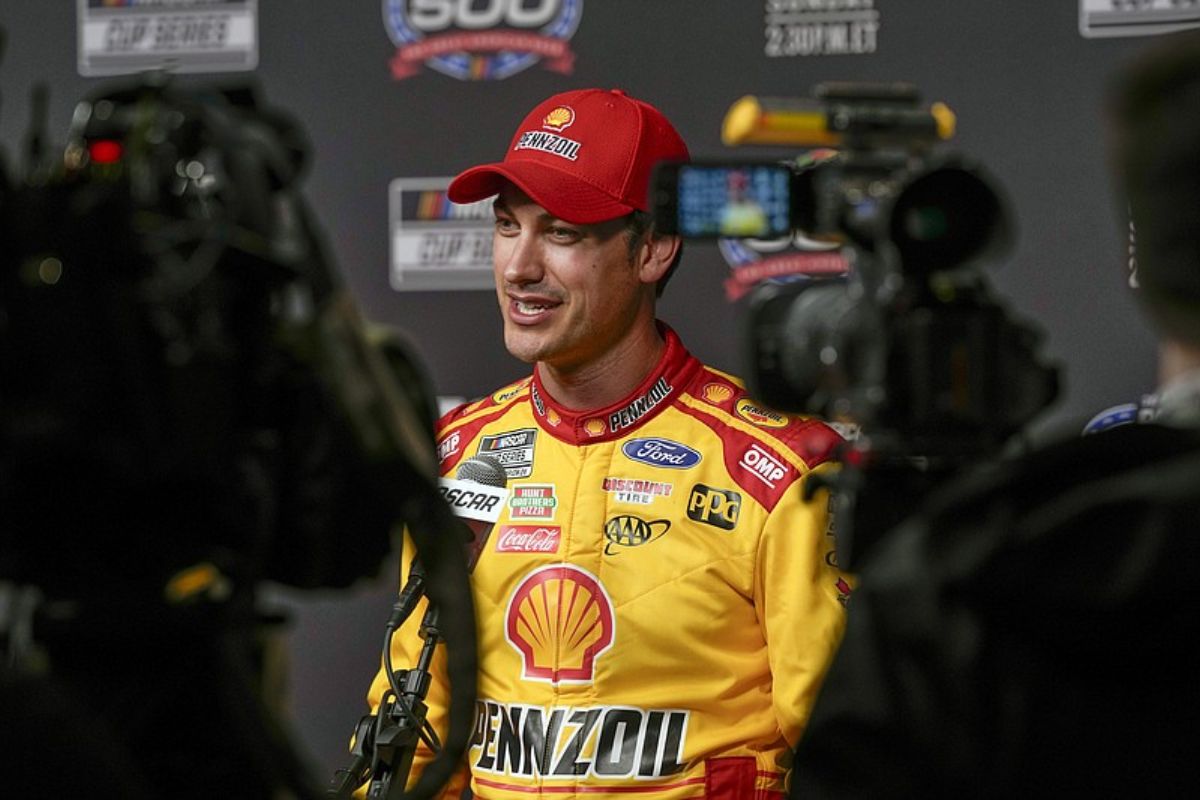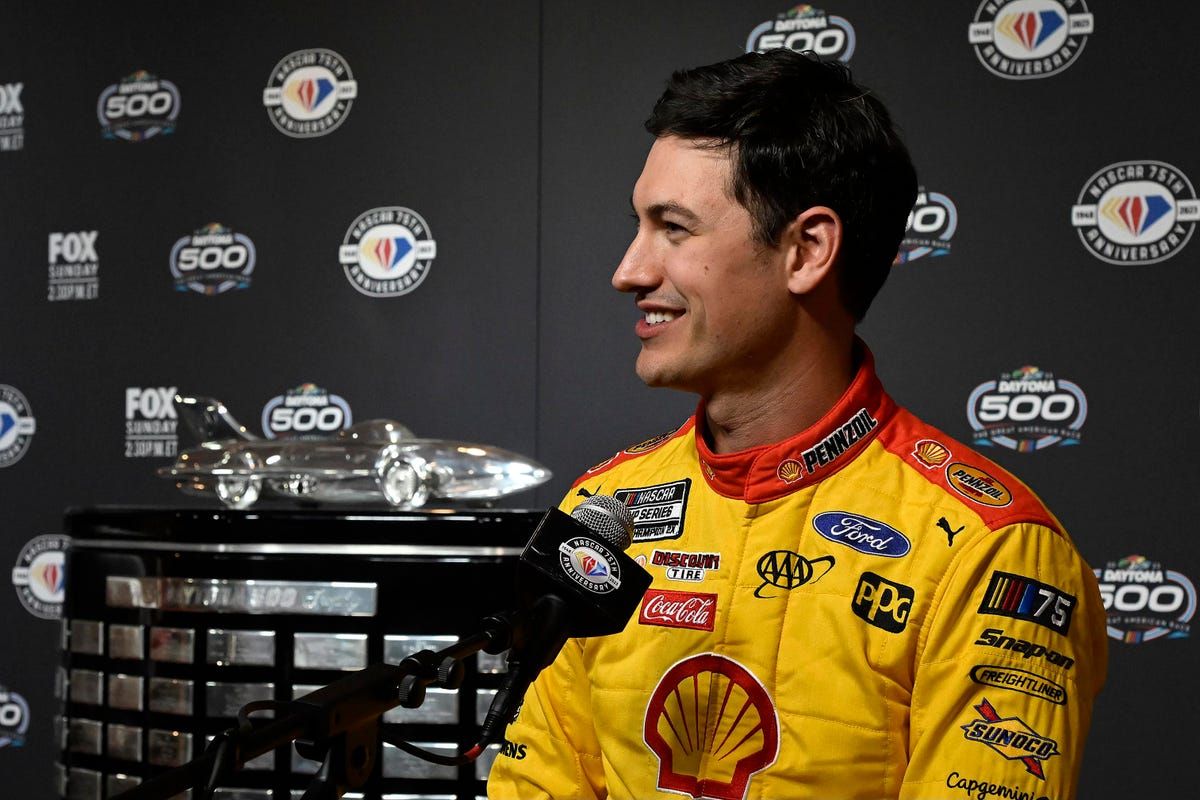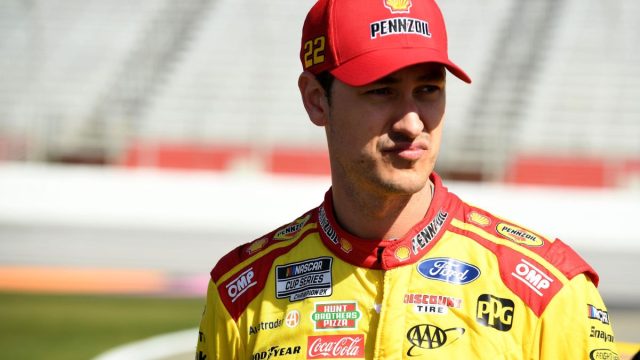Joey Logano Exposes Ford’s Hidden Weakness: Joey Logano’s crucial observations have highlighted significant issues within Ford’s racing strategy, particularly emphasizing the shortfall in engine performance and vehicle dynamics. Despite the introduction of the enhanced Mustang Dark Horse, expected victories remain elusive, placing Ford behind Toyota and Chevrolet. Logano’s analysis emphasizes the necessity for a strategic overhaul, focusing on technological advancements and a deeper understanding of aerodynamics. His insights, coupled with Chris Buescher’s similar criticisms, paint a picture of systemic challenges requiring a collective, innovative response. As the Richmond race looms, Ford’s opportunity for redemption hinges on adapting strategies that Logano hints could steer them toward competitive excellence. A deeper exploration offers a roadmap to potential solutions and strategic recalibrations.
Key Takeaways
- Joey Logano identifies engine performance as critical for Ford’s competitive edge in the Cup Series.
- Despite the introduction of the improved Mustang’s Dark Horse, Ford has not seen the resurgence it anticipated.
- Logano’s insights suggest the need for a strategic overhaul in engine upgrades and vehicle optimization.
- Ford’s lack of victories this season points to systemic issues beyond individual team dynamics.
- Collective efforts and technological advancements are urged to address Ford’s challenges and regain its competitive stance.
Ford’s Lagging Performance
As the Cup Series season progresses, Ford’s performance lag becomes increasingly evident, with their failure to secure a victory highlighting the need for significant enhancements in engine capability and vehicle dynamics. Six races into the season, while rivals Toyota and Chevrolet have each celebrated wins, Ford’s anticipated resurgence, spearheaded by the improved Mustang’s Dark Horse, remains a vision unfulfilled. This performance shortfall emphasizes a critical juncture for Ford Performance, necessitating a strategic overhaul in engine upgrades and vehicle optimization to bridge the competitive chasm.
The necessity for engine improvements cannot be overstated. Powertrain efficiency, responsiveness, and reliability are cornerstones of racing dominance, areas where Ford presently trails. Additionally, holistic vehicle optimization—balancing aerodynamics, suspension tuning, and weight distribution—is crucial to converting raw speed into consistent race day performance. This scenario is not merely about enhancing a single component but fostering a synergistic vehicle ecosystem capable of contending with the sophisticated engineering prowess of manufacturer competition.
The current performance struggles serve as a clarion call for a paradigm shift in Ford’s approach towards achieving racing dominance, highlighting the intricate dance of innovation and adaptation critical in the high-stakes arena of motorsports.

Joey Logano’s Insight
Building on the identified performance challenges facing Ford, Joey Logano, a seasoned driver from Team Penske, sheds light on the multifaceted nature of these issues, pinpointing engine difficulties as a primary concern. Logano’s perspective explores deeply into Ford’s struggles, offering a nuanced understanding that extends beyond mere surface-level problems. His insights reveal the critical need for Ford teams to look inward, reassess, and recalibrate their strategies in pursuit of competitive excellence.
Key points from Logano’s analysis include:
- Engine Performance: The crux of Ford’s challenges lies in engine performance. Despite the advent of new car models, the anticipated leap in performance has not materialized, primarily due to unresolved engine issues.
- Team Dynamics: Logano emphasizes the importance of cohesive team dynamics. The synergy between drivers, engineers, and the pit crew plays a crucial role in overcoming performance hurdles and optimizing the car’s capabilities.
- Potential Improvements: Looking ahead, Logano identifies areas for potential improvements. These encompass technological advancements, a deeper understanding of the new car’s aerodynamics, and a strategic approach to harnessing its full potential.
Logano’s detailed analysis highlights the complexity of Ford’s situation, emphasizing the need for a concerted effort to address performance hurdles and usher in a new era of competitive racing.
“I say engine is probably the number one thing that stands out right now that we got to keep working on but it’s going to be a little bit of everywhere for sure. Still got the new car we are going have to keep learning about, making sure we are getting all the potential out of the car.” Logano said
It’s never one thing, it’s always a little bit of everything.”jOEY LOGANO
Chris Buescher Echoes Logano’s Sentiments
Echoing Joey Logano’s concerns, Chris Buescher of RFK Racing emphasizes the important challenges Ford teams face, highlighting an all-encompassing struggle that requires a unified solution. Despite achieving a commendable top-10 finish at COTA, Buescher’s insights reveal a broader narrative of struggle within the Ford camp. His support for Logano’s assessment highlights a shared sentiment among Ford drivers, pointing to a systemic issue that transcends individual team dynamics.
“If it was just us or our organization that we’re talking about then I would say maybe you could say it was execution. But when we have the numbers that we do I would say it is hard to put a blanket over all of us and says that the execution hasn’t been with a single one.”CHRIS BUESCHER
“The Toyota camp had the same thing in front of them. So we are working through it and trying to figure out what exactly it is.”CHRIS BUESCHER
Analyzing Buescher’s perspective, it becomes evident that the struggle is not isolated to performance issues on the track but is indicative of underlying hidden weaknesses within Ford’s racing strategy. Struggling teams across the board highlight a critical need for a strategic overhaul to regain their competitive edge. The call for an all-inclusive solution suggests that piecemeal efforts at the team level are insufficient to address the scale of the challenge.
Buescher’s commentary adds a pivotal layer of insight into the team dynamics and inter-team collaborations, or lack thereof, that are essential in overcoming these obstacles. His acknowledgment of the situation and the appeal for a collective approach highlight the urgency for Ford to address these challenges head-on, leveraging the strengths of their collective racing ensemble to craft a path to resurgence.
Comparison with Competitors
In the high-stakes arena of motorsport, the stark contrast in performance between Ford and its competitors, Toyota and Chevrolet, highlights a critical juncture for the former, necessitating urgent strategic adjustments to regain its competitive edge. This comparison not only showcases Ford’s immediate challenges but also emphasizes the strategic directions Toyota and Chevrolet have successfully started upon.
The competitive landscape is defined by several key factors:
- Toyota Dominance: Toyota’s recent successes are not merely attributed to innovation in vehicle design and performance but also their strategic vision in driver development and team dynamics. Their vehicles’ reliability and speed have set a high benchmark in the industry, pushing Ford to rethink its approach to vehicle performance and team strategy.
- Chevrolet Resurgence: Chevrolet’s comeback is a classic tale of resurgence, marked by their ability to quickly adapt to the evolving dynamics of motorsport. Their focus on aerodynamics, engine performance, and leveraging data analytics for race strategy optimization has provided them a significant edge over Ford.
- Ford’s Challenges: Ford’s predicament is multi-faceted, involving not just Logano’s struggles but also a broader issue of vehicle performance and adaptability. The upcoming race at Richmond signifies more than just an opportunity for redemption; it is a test for Ford’s capacity to address and overcome these systemic challenges.
In light of these factors, Ford’s path forward is filled with the necessity for innovation, strategic adjustment, and a thorough exploration into the technical and operational aspects that currently give their competitors an advantage.
Forward Outlook
As Ford gears up for the Richmond race, a vital moment looms, offering the automaker a prime opportunity to recalibrate and demonstrate its prowess in the fiercely competitive Cup Series landscape. Historically, Richmond has been a beacon of hope for Ford, a track where their engineering and strategy have previously shone. This upcoming event is not just another race; it’s a pivotal juncture for Ford to address the recent performance dip and pivot towards reclaiming their stature.
Ford’s strategy moving forward hinges on a thorough analysis of their current shortcomings, with a particular focus on optimizing team dynamics and vehicle setup to suit the unique track conditions Richmond presents. Potential solutions could range from adjustments in aerodynamics to fine-tuning engine performance, all aimed at maximizing driver performance. The synergy between drivers like Logano and Buescher and their crews will be paramount in translating these technical adjustments into tangible results on the track.
The forward outlook for Ford, thus, revolves around leveraging the Richmond race as a platform to showcase a revitalized team spirit, enhanced vehicle reliability, and a strategic acumen capable of overcoming the challenges posed by competitors. This race could very well be the catalyst Ford needs to reignite their campaign in the Cup Series, signaling a return to form that fans and competitors both will keenly observe.

News in Brief
The disclosures made by Joey Logano and supported by Chris Buescher have highlighted a significant vulnerability within Ford’s competitive strategy in the racing domain.
This insight, compared against the performance metrics of their rivals, paints a detailed picture of Ford’s current standing and the challenges it faces.
As the company looks ahead, addressing these identified weaknesses will be vital for regaining a competitive edge and ensuring future successes in the fiercely contested automotive racing landscape.
Our Reader’s Queries
Q: Does Joey Logano drive a Ford?
A: Competing full-time in the NASCAR Cup Series, he pilots the No. 22 Ford Mustang Dark Horse for Team Penske. His racing journey includes stints in the NASCAR Xfinity Series, the NASCAR Craftsman Truck Series, and the ARCA Menards Series.
Q: Why is Joey Logano famous?
A: Joey Logano, representing Shell-Pennzoil at Team Penske in NASCAR, has a history of remarkable achievements. He made history at 18 as the youngest winner of a Nationwide Series race and remains a steadfast advocate for Shell Eco-marathon.
Q: Who is Joey Logano’s main sponsor?
A: In 2024, the No. 22 Hunt Brothers Pizza Ford Mustang will hit the track, adorned with its iconic red and green colors. The NASCAR Cup Series kicks off on February 4 with the Clash at the Los Angeles Coliseum, marking the start of another thrilling season.
Also Read: Joey Logano in Crisis? Inside His Shocking Start to the Season
